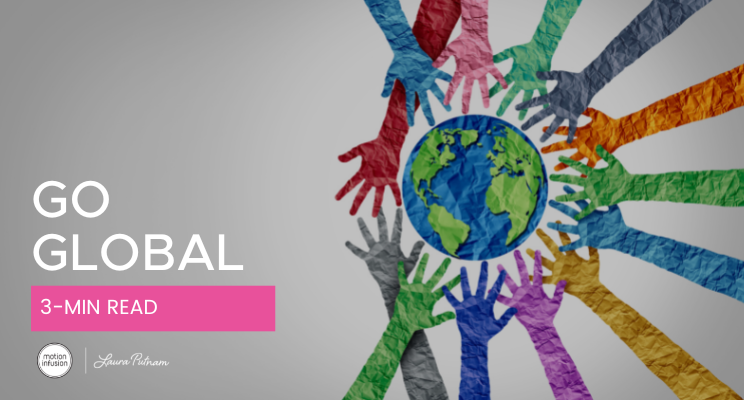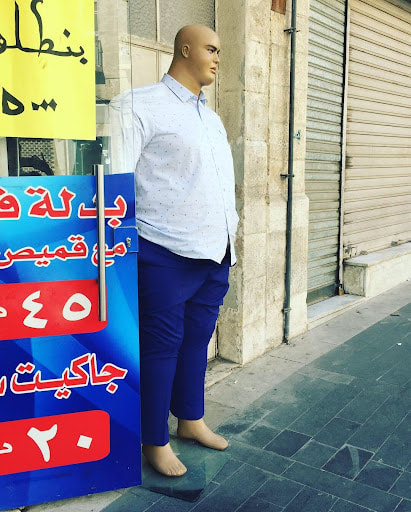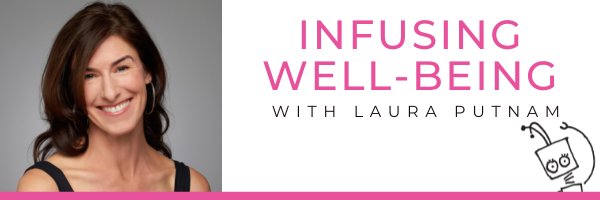|
I've been saying this since 2014, but managers really are the key to well-being. They make — or break — the level of well-being for their team members. New data released by Deloitte, Gallup, and McKinsey all agree—the manager's role deeply affects employee well-being, engagement, and productivity.
This means that if you’re a manager, and if you’re not prioritizing your well-being, then you're putting yourself --and your team — at risk. Here’s what the recent Deloitte Report had to say:
0 Comments
A recently released study shows that workers are happier at work, but women are less happy than their male colleagues.
Come on – are we really surprised by this? Ask any woman – or if you’re a woman, ask yourself – and she will surely tell you about a time when she was minimized, not credited or wholly removed from organizational history – not to mention, underpaid or even sexually harassed. These are all part of the collective experience for women in the workplace. Case in point: I was asked to create and deliver a two-day leadership-meets-wellness training program for high-potential managers at a multinational corporation. I, along with a female manager on the organizational development team who originally hatched the idea, worked tirelessly in creating and delivering the program. The VP of HR at the time (also a woman) was the one who championed the program, serving as our opening keynote. In other words, the program — start to finish — was initiated by, created by and led by women. More Americans than ever are feeling lonely and socially isolated. This lack of social connection is having profound effects on our mental and physical health, according to a warning released by the Surgeon General on May 1st.
This formal advisory is the first time America’s top doctor has issued a warning about loneliness and adds to growing concern that the epidemic will only get worse as remote and hybrid work models become permanent for millions of American's. Rates of loneliness, which were already at record highs pre-pandemic, have only gotten worse post-pandemic. The impact of it is likely to be devastating. In fact, the Surgeon General cited earlier research showing that loneliness is as deadly as smoking. After working with hundreds of organizations and over 20,000 CEOs and managers to implement workplace well-being strategies, I strongly believe that the shift toward hybrid and remote work is only going to make the loneliness epidemic worse. That said, it’s clear that hybrid and remote work is here to stay. So, given these challenges, here are three ways employers can cultivate connection with their employees to mitigate the effects of the rise in loneliness: With all the hype around artificial intelligence (AI) it’s easy to get swept up and believe AI is the panacea in solving the spike in mental health issues, such as burnout, depression and anxiety, along with overall well-being in the workplace. Evidence suggests that it won’t do much, as most AI-based solutions are the same thing, in a different wrapper. That is, they are yet another check-the-box wellness product that targets the individual - and does nothing to address the company culture or the leaders who shape that culture.
“Nice guys finish last.”
“Check your emotions at the door.” “Suck it up, buttercup.” All of these well-trotted expressions speak to an outdated model of leadership. In a world turned upside down and with the workplace redefining itself, this model no longer holds - especially when it comes to our mental health. Rather, the stats are too big to ignore:
Mental health is an issue for everyone - even at the highest levels. A Deloitte report found that 70% of top leaders are seriously considering quitting for mental health reasons. While it’s affecting everyone, it’s affecting some more than others. Factors such as gender and line of work are leading to a disproportionate impact. Construction workers, for example, are at the second highest risk for suicide, second only to veterans. And, while more women suffer from depression and are more likely to contemplate suicide, men are three times more likely to die by suicide. Having worked with over 200 organizations and trained over 15,000 managers and leaders, I see a clear pattern: Those organizations and industries that need this new kind of leadership most, are often the ones who resist it the most. What we’re now seeing – whether in Kuwait, China, Brazil, Bangladesh or the U.S. – is that the world needs wellness! Diseases and conditions traditionally associated with urbanization and higher standards of living, aka “Western lifestyle,” are not only happening in non-Western parts of the world, but seem to be happening at a faster rate in countries outside of the US. For example, the rise in childhood obesity is happening 30% faster in developing countries than in wealthier nations.
So, what can we do? The last step I recommend, drawn from my book Workplace Wellness that Works, is to go global. That is, we need to share best practices across borders. The mandate for lifestyle change has gone international – and our only way out just might be to channel our friend and inventor, Thomas Edison. I was recently in Kuwait, and in preparation for the trip, was shocked to learn that Kuwait has both the highest rate of obesity in the world, according to the Food Security Index, AND the highest rate of stomach stapling. A shocking 43% of the population is obese – and nearly 75% is overweight. Wow! A "plus size" mannequin in Kuwait City.
Two young fish encountered an older fish. “Morning boys,” the older fish said, “How’s the water?” – and the two younger fish kept swimming. A moment later one of the younger fish turned to the other and asked, “What the hell is water?”
This is the story that the late philosopher David Foster Wallace used to open a commencement speech - and the one that I shared in Step 3: Uncover the Hidden Factors to illustrate the fact that like water, our surrounding environment is so ubiquitous, we might not even see it (much the way these two young fish did not). Yet, it shapes our behaviors in ways that we might not imagine. Therefore, while we often hear the expression that we are creatures of habit, I would argue that in fact we are more creatures of culture and environment.
I often hear leaders and wellness professionals ask for products and services that will “get people to change” or will “get people motivated.” Here’s the thing: nothing will ever “get people to change” or “get people motivated.” Rather, people change themselves. The best we can do is to create the conditions in which people are more likely to motivate themselves.
So, what can we do? We can follow the lead of Yvon Chouinard, founder of Patagonia, who aptly titled his book “Let My People Go Surfing” – as opposed to “Get My People to Go Surfing.” To transition from “get” to “let” – we must move away from our over-reliance on incentives and penalties. Currently, the average employee incentive has reached a whopping $742, up from $651 in 2016. It’s gotten so high, in fact, that employees are leaving money on the table, according to a recent study. What the research overwhelmingly and repeatedly shows is that at best incentives will get people in the door, but they will never keep people there. Moreover, there’s evidence to suggest that incentives may perversely undermine the intrinsic motivation and willingness to sustain a behavior over time. Shortly after delivering a training workshop, I received an email from one of the attendees (let’s call her “Anna”): “I am looking for some of the studies that have been done on the correlation between happiness and wellness. I am presenting to our “C Suite” on Monday and wanted something to reference. “ I shared a few resources and followed up a couple of weeks later to see how it went. And, here’s what she said: “Despite my efforts to come prepared with data, studies and big ideas, my presentation wasn’t well received. My “C Suite” was more worried about the bottom line than any impact we might be able to make. So, back to the drawing board. It was the most frustrating Monday meeting I’ve had in a while and honestly, took the wind out of my sails.” |
Follow laura on social:Website by Brand Genie
|
join laura's monthly newsletter
|













